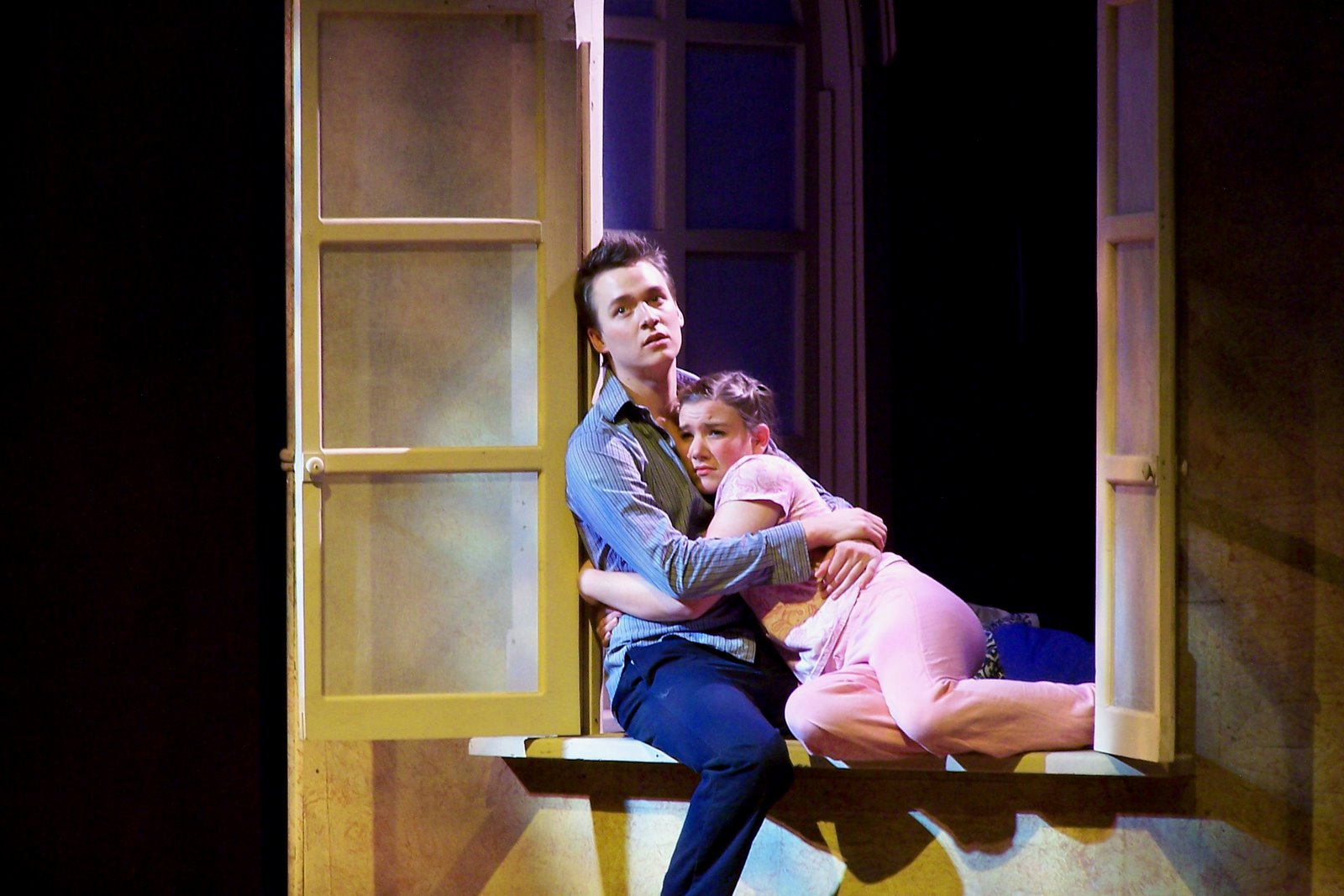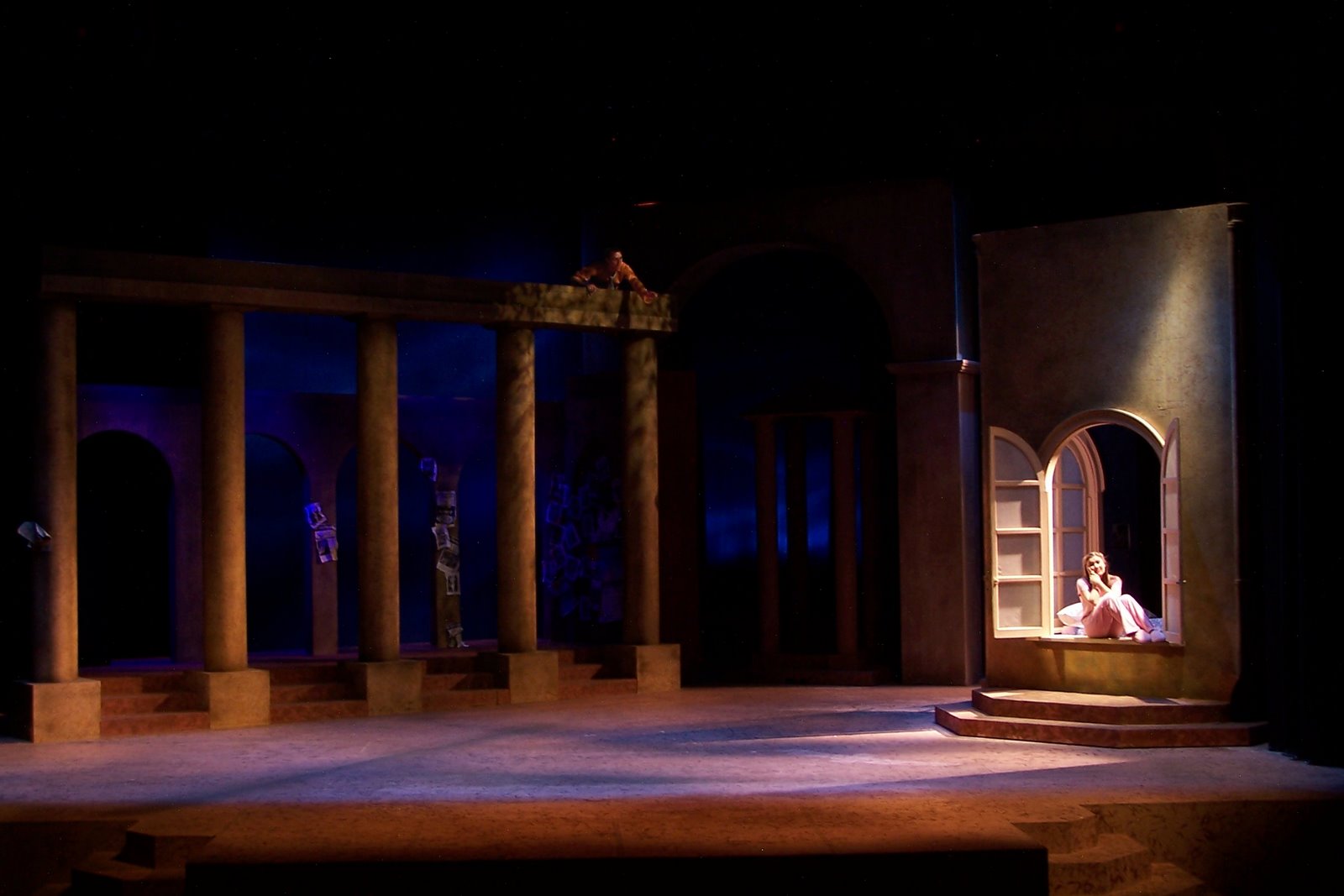People always speak of the Balcony Scene from Romeo & Juliet as one of the "greatest romantic scenes in literature." Perhaps it is. But it's also two teenagers on the phone late at night. It even comes complete with the "You hang up!" "No, you hang up" moment. If played right, it is at least as funny as it is touching.
Being interested in the script, there is something that has always bothered me about this scene. With this most recent production, after years of snide remarks behind my hand, I did what I long have threatened: I got rid of Juliet's balcony.
I'm not the first, I'm sure. And I'll tell myself my motives were pure, that I did not do it to shock, but that I had excellent textual reasons (nowhere in the script does it say balcony. Romeo's line is "what light through yonder window breaks?"), etc. That way I can sleep at night.
But you know something? It works. It works so very well. Why? For one simple reason: Juliet wasn't trapped.
We call it the Balcony Scene because on the Globe stage, there were two balconies that were used for just these kind of scenes. But just because that's the way they staged it doesn't mean we should follow. This is an example of us being trapped by the traditions of Shakespeare's stage. By removing the balcony, I freed both Juliet and the audience.
R&J
Act II, Scene ii – Matt Anderson as Romeo, Stephanie VanAlstine as
Juliet. Photo and lighting by Jeromy Hopgood. Set by John Charles.
For me, the ground-floor window works because I can use it throughout the play. Every Juliet scene has an anchor, a touchstone. When we first discover her, she's in her bedroom listening to music. Later, when Romeo goes to leave, she can follow him, and already be in place for her mother's entrance. Logistically, it helps the show to flow. There's no waiting for her to get downstairs.
Now, I'm the first to admit not every line is with me. Romeo has an oblique reference to "being o'er my head." But there are two or three other reasonable interpretations to that line. Likewise, I found ways to stage "One kiss and I'll descend" and "I see thee, now thou art so low, as one dead," both lines from the Morning-After scene, by using the window and a couple steps. And the cords the Nurse brings? We used those to help Romeo get over the wall.
What I liked best about it was Juliet's freedom, and the intimacy it allowed her to share with the audience. Juliet is a character forever put on a pedestal – by teachers, by readers, by actors, by directors, by audiences, who all think of her as the ideal young lover. Placing her up on some remote balcony away from the audience reinforces that, whereas I want to undermine it.
Why undermine? Because she's a thirteen year-old girl! She's not some savvy, romantic ideal. She's young, smart, funny, conflicted, bursting with too many emotions at once. Listen to her lines from "Farewell compliment!" on. She ping-pongs from thought to thought, emotion to emotion, bubbling over with more than she can express, and not all of it is demure or sweet (this leads into a discussion of the "Juliet Trap," but that's for another post). It was great fun to allow my Juliet the freedom to match her metal ricochets with full physical freedom.
(Note, too, that Juliet is wearing pajamas. Not some flowing night-gown, but what an almost-fourteen year-old wears to bed).
Now, as I say, I'm sure I'm not the first to get rid of the balcony. But I went further with this idea than just putting Juliet on the ground floor. When Romeo ditches his friends, Benvolio says, "He ran this way, and leapt this orchard wall." So, I thought, Romeo climbed a wall? Why not leave him up there?
Thus, for the first part of the scene, Romeo is up, and Juliet down. He descends before the initial love talk is done, well before her "Farewell, compliment" speech. And suddenly it was a scene I had never seen before.
And yet, the window still allowed me to have moments like this one (III.v.):
R&J Act III, Scene v – Matt Anderson as Romeo, Stephanie VanAlstine as Juliet. Photo and lighting by Jeromy Hopgood. Set by John Charles. Costumes by Melanie Schuessler.



Not sure if Jan told you, but I was extremely fond of this choice! I think I called it the “inverted balcony” scene.
I was pretty fond of it as well… 😀